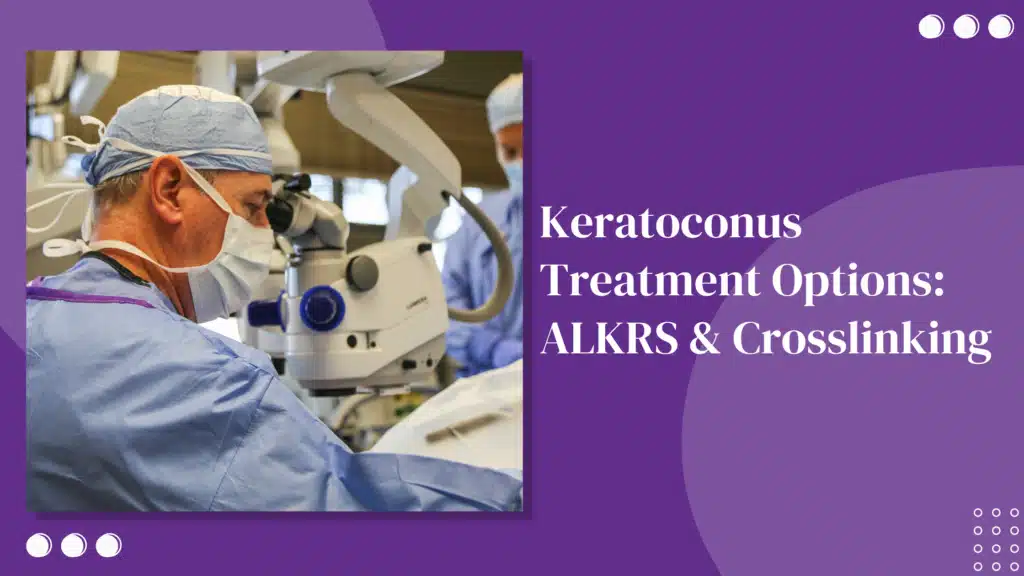
While some people may be familiar with various corneal conditions, many do not fully understand Keratoconus and the components linked to this cornea disorder. At Minnesota Eye Consultants, our cornea surgeons want to make sure that patients understand the symptoms, risk factors, treatment options, and other aspects connected to keratoconus. Read on to learn more!
What is Keratoconus?
Keratoconus (KCN) is a thinning disorder of the cornea in which the round, symmetrical shape of the cornea is distorted, and a cone-like bulge develops, resulting in significant vision problems. At certain times, objects may appear as though you’re looking through warped and distorted glass. The progression of Keratoconus is generally slow, and it sometimes stops progressing with age. However, Keratoconus doesn’t get better on its own if left untreated.
What are the Signs and Symptoms of Keratoconus?
The first indication of Keratoconus is a blurring and distortion of vision. In the early stages, this may be corrected with glasses. Eventually, vision cannot be completely corrected by glasses and contact lenses would be required. Scarring or swelling of the cornea may also develop as symptoms in later stages.
Who is affected by Keratoconus?
Keratoconus is not rare, and it has been estimated to affect vision in about 1 out of every 2,000 persons in a general population. It may also be present without symptoms in as many as 1 in 500 people. The disease usually shows up in young people in their teen years but can also be diagnosed in individuals that are older.
Keratoconus has a genetic component and often runs in families. Other risk factors include allergies (which often lead to eye rubbing) and sleep apnea. With time, eye rubbing can worsen corneal thinning and increase irregular astigmatism. Patients with sleep apnea often sleep on their stomach or side to avoid snoring. Sleeping in this position can put pressure on the eyes which can also contribute to keratoconus progression. In general, the earlier in life someone has symptoms, the worse the disease eventually becomes.
What are the treatment options for Keratoconus?
Treatment options for keratoconus are directed toward two primary goals. The first goal is to halt the progression of the irregular curvature, and “lock in” your vision where it is today. This is accomplished with corneal crosslinking. The second goal of keratoconus treatment is to improve your quality of vision by neutralizing the astigmatism caused by irregular curvature. This is accomplished with specialty contact lenses, corneal inlays, or corneal transplants.
Corneal Crosslinking: Most patients diagnosed with keratoconus, regardless of severity, qualify for corneal crosslinking. Crosslinking is a technique that uses ultraviolet (UV) light and a photosensitizer called riboflavin (vitamin B2) to strengthen the cornea and is intended to reduce the progression of keratoconus. Watch video now.
Anterior Lamellar Keratoplasty with Regional Segments (ALKRS): ALKRS uses donor corneal tissue in a ring layer of the cornea. The donor tissue is cut to a specific size based on each patient’s pre-operative measurements. This allows the surgeon to target the most irregular sections of the cornea. As opposed to a full-thickness transplant, ALKRS tissue is placed into a pocket within the natural cornea created by a laser during the procedure.
ALKRS is primarily done in conjunction with collagen crosslinking. At Minnesota Eye Consultants, we often perform ALKRS and corneal crosslinking on the same day. The healing of ALKRS after the operation is rather quick and the recovery will likely be similar to a typical crosslinking recovery. Patients can expect some side effects such as light sensitivity, blurry vision, irritation, and mild discomfort.
What happens after the treatment?
Vision following the procedure is different for each patient. Because just one eye is operated on each time, the other eye isn’t affected, and most patients go back to work in a few days.
Glasses or contact lens prescriptions change for a few months after the procedure, and the other eye is typically done when the first eye has glasses or contacts that can work for the patient.
As with many corneal procedures, patients are advised to avoid saunas, pools, or hot tubs for two weeks to prevent contaminated water from getting into the eyes. All patients diagnosed with keratoconus are strongly encouraged to control allergies, avoid eye rubbing, and avoid sleeping on their faces to prevent progression.
If you’re experiencing any symptoms of keratoconus or having discomfort in your eyes, call Minnesota Eye Consultants at (952) 888-5800 to schedule an eye exam.









